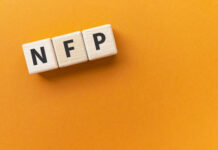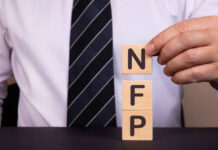Markets
US October retail sales served as the main dish for today. The countdown was rewarded with a small beat across all gauges. The headline series dropped less than expected, -0.1% m/m vs -0.3%. Two core measures printed a slight uptick of 0.1%. A private consumption proxy, the control group (excluding food services, auto dealers, building materials and gas stations), added 0.2%. The underlying components showed a mixed picture. The drag from furniture (-2% m/m), motor vehicles & parts (-1%) and sporting goods (-0.8%) was offset by rising sales in electronics (0.6%), health & personal care (+1.1%) and food & beverages (+0.6%). The numbers are actually not at all bad if you take into account the strong September month. Its readings which were revised even higher, resulting in advances from 0.7% to 0.9%. It means the fourth quarter started of on decent footing. We’re also keen to find out to what this consumer resilience will lead to in the current holiday season (starting with Thanksgiving’s Day and Black Friday next week). US yields briefly dropped after the release but we suspect this was a kneejerk move on PPI data released simultaneously. All variants came in on the weaker side of expectations. The New York’s manufacturing index unexpectedly re-entered positive territory, jumping from -4.6 to 9.1. Details, however, offered less reasons to be optimistic though. Shipments rose sharply but new orders and number of employees either became more or turned negative while hours worked were cut. Either way, yields try to recover some ground after yesterday’s outsized market reaction to a <0.1% CPI miss. They add 5.8-7.6 bps across the curve, the belly underperforming. German yields eke out an 1.9-3.4 bps advance in technically insignificant trading. The European Commission lowered its autumn growth forecast for the bloc, citing losing momentum on the high cost of living, weak external demand and monetary tightening. It now expects 0.6% growth this year with the running quarter seen printing at 0.2%. It therefore should avoid a recession (as well as Germany). Growth is expected to pick up to 1.2% in 2024 and 1.6% in the next year. After an average of 5.6% this year, inflation in the euro area should ease to 3.2% (from 2.9% in the previous estimate) and 2.2% in the two years thereafter. Belgium is one of the four EU member states where HICP is expected to drop below 2% in 2025. Turning to currency markets, the dollar barely recovers from yesterday’s uppercut. It does strengthen against the three major currencies. EUR/USD (1.0852) eases back below the 50% retracement of the 2023H2 decline. USD/JPY bounces back from the 150 barrier to 150.93 and cable (GBP/USD, 1.2443) called off the attack on the 1.25 resistance level. The latter also features sterling weakness after inflation in the UK followed the US in dropping a little more than expected. It cemented money market expectations for the Bank of England having reached the end of the tightening cycle while preparing for rate cuts from 2024H2 on.
News & Views
Zsolt Kuti, Hungarian central bank’s director in charge of monetary policy and therefore very close advisor to the rate-setting committee argued against cutting policy rates too hastily. “For a return to sustainable growth, the country needs to ensure price stability by cautiously chipping away at interest rates, instead of rushed ax blows that would lead to sustained high inflation and to falling behind,” he wrote. Hungarian inflation (9.9% Y/Y in October) remains unacceptably high with the central bank’s efforts only at “half-time”. Kuti’s comments come after markets stepped up easing bets following a bigger-than-expected 75 bps rate cut last month. They also conflict with recent comments by Hungarian PM Orban’s economic policy chief Nagy who criticized the central bank’s fetish with positive real rates which are ‘the greatest impediment to growth”. The Hungarian forint lost some ground today with EUR/HUF bouncing back from a 4-month low around 375 to 377.50. HUF swap rates fall 6 to 9 bps across the curve.
Swedish Kantar Prospera published results of its monthly survey mapping money market player’s expectations of Swedish inflation, GDP, policy rate, 5-yr bond and FX rates. 1-year ahead CPIF annual inflation forecasts picked up from 2.7% to 2.8%, while 3-yr and 5-yr prognosis stayed unchanged both at 2.1%. They see the policy rate peaking higher (4.2% from 4.1% in 3 months’ time) and remaining sticky for longer (2.8% from 2.6% in 2 years’ time. The Swedish Riksbank meeting next week with money markets attaching a 25% probability for a final 25 bps rate hike to 4.25%. The Swedish koruna extends yesterday’s bullish run with EUR/SEK approaching the 11.40 technical neckline of a big triple top formation.













